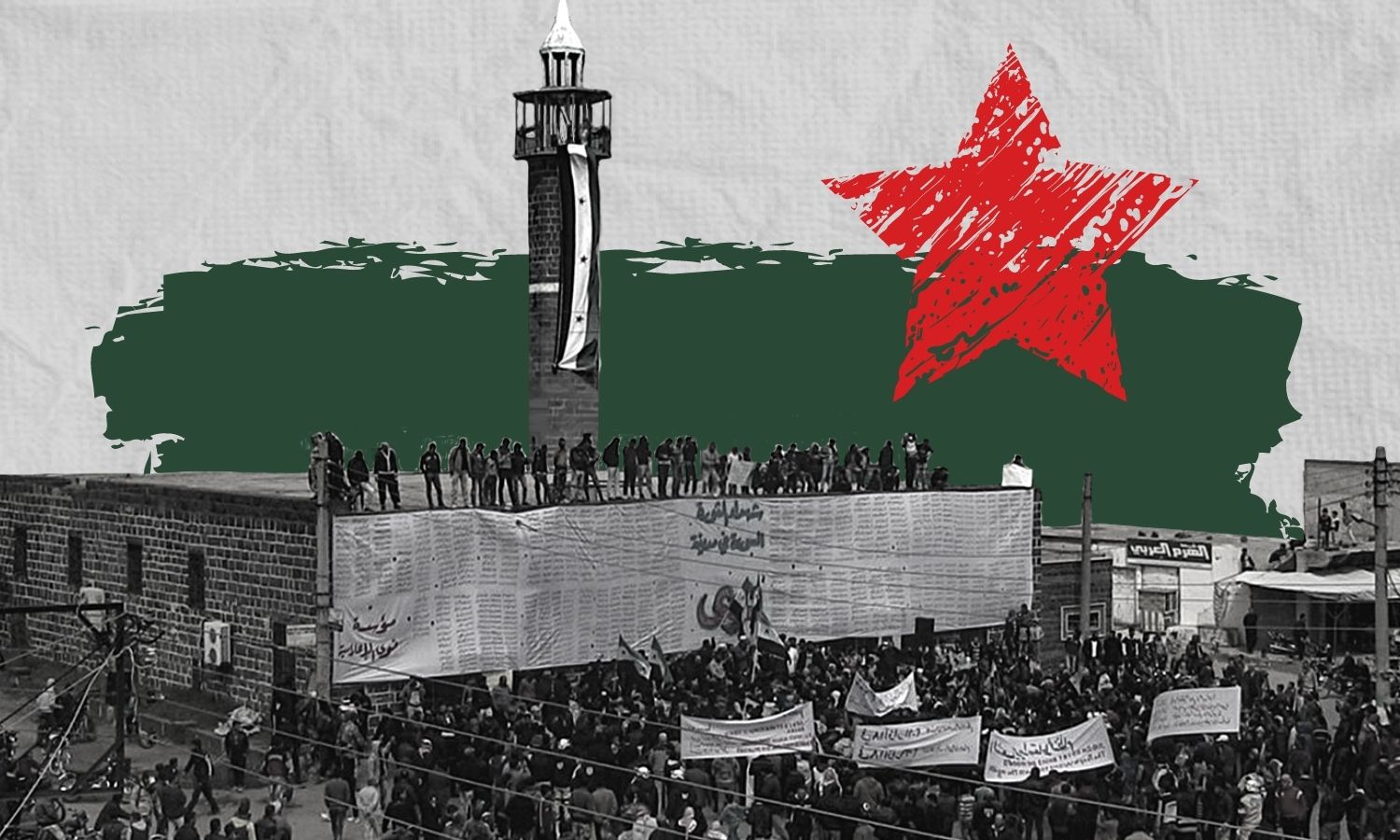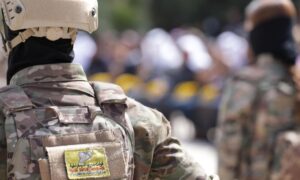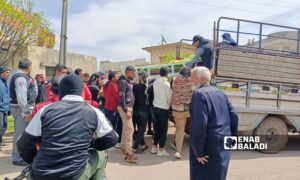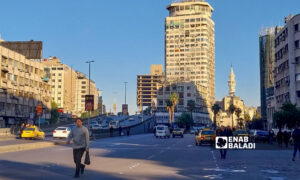
Syrian regime using collective punishment against Daraa residents

Enab Baladi – Khaled al-Jeratli
This July, the governorate of Daraa is approaching the third anniversary of falling entirely under the Syrian regime forces’ control after they recaptured the Yarmouk Basin in late July 2018 following military offensives that led to the displacement of thousands of the southern region’s residents to the cities and villages of northern Syria outside of the regime’s control.
In conjunction with the anniversary, the regime’s forces backed by Russia have intensified their siege on Daraa al-Balad city, while severe insecurity continues to prevail in the governorate with about 1000 assassination and bombing incidents reported, according to the Daraa Martyrs Documentation Office (DMDO).
Although the regime is militarily present in the environs of some villages, cities, and army barracks in Daraa, it faces considerable difficulty in establishing effective control over the governorate due to widespread popular rejection.
The people of Daraa refrained from participating in the regime’s presidential elections held last May, and unlike the rest of the Syrian governorates, the regime failed to force Daraa’s residents to participate in the presidential polls.
Security and military escalation in Daraa
In late June, the Russian general in charge of the Russian Military Police in Daraa named Asadullah demanded the Central Committee of Daraa al-Balad to hand over 200 rifles and 20 BKC machine guns and to allow forces to enter the city and search residents’ houses in return for promises to disband Syrian regime militias in the area.
The Central Committee did not accede to Russian demands and denied having light weapons in the city, claiming that the opposition factions surrendered them to the regime after losing control of Daraa and Quneitra. The regime responded by imposing a full blockade on the city of Daraa al-Balad.
Days after the blockade, the regime ordered the residents of al-Sanamayn city in Daraa to lay down their light weapons, threatening to raid their houses and arrest them if they refused.
Daraa 24 website that covers the news of southern Syria in general and Daraa governorate in particular, reported a meeting between regime’s security officials at the 9th Division’s headquarters in al-Sanamayn. In the meeting, the officials called on local dignitaries who have ties with regime apparatus to hand over light arms distributed in the city in exchange for a new settlement agreement.
In recent days, several areas in Daraa governorate, including the towns of the Yarmouk Basin, Muzayrib, and Tal Shihab, held demonstrations in solidarity with Daraa al-Balad. Slogans were inscribed on walls cheering on Daraa al-Balad and demanding the regime to break the siege on the city.
Over the past week, Syrian regime warplanes flew at low altitude over Daraa al-Balad, which activists saw as a threat of force use if Russian demands were unanswered.
For their part, civilians of Daraa al-Balad did not yield to pressures and organized demonstrations on 2 July in the courtyard of the al-Omari Mosque after Friday prayers, raising placards and posters that read “We are steadfast here,” in protest against the regime’s blockade of the city.
Daraa: regime’s stage to parade control
Syrian writer and political researcher Ghassan al-Mufleh told Enab Baladi that regime forces and their Russian backers are trying to present themselves as the power in control of the largest part of the Syrian map, even if they had not any kind of power in the areas they control.
Al-Mufleh added that it is in Russia’s interests to keep some areas in a state of security and military escalation, especially after its image as a chief reconciliation broker has declined over time. Russia would use the turbulent situation in southern Syria as a pressure card in its agreements, but at the same time, it is keen on keeping escalation at balance and under control, such as in Daraa, which is militarily weak, making things manageable for Russia there.
In July 2018, the Syrian regime made a settlement agreement with opposition factions in Daraa under Russian auspices. Russia promised to guarantee the safety of civilians who refused to head to northern Syria along with former opposition factions’ leaders. The agreement, however, was breached repeatedly by the regime carrying out arrest campaigns on the grounds of “personal claims” and membership in the Islamic State (IS) three years ago to this date.
The escalation policy adopted by the regime and Russia in southern Syria has been intensified from time to time through arrests and search campaigns and the latest siege imposed by the regime on Daraa al-Balad.
Syrian regime’s acts of retaliation against Daraa
Despite the regime and Russia’s claims that Daraa al-Balad’s security unrest and blockade are attributed to residents’ refusal to let go of their light weaponry, a military analyst and expert of the situation in southern Syria, Brigadier General Abdullah al-Asaad, said that the regime’s recent hostility against Daraa is due to its residents’ refrain from participating in the latest Syrian presidential elections.
During the May presidential elections, three central demonstrations were held in the city of Tafas in Daraa’s western countryside, Daraa al-Balad, and Busra al-Harir in eastern Daraa. A general strike was also organized and coordinated in various cities and towns of Daraa governorate, where flags of the Syrian revolution were raised, challenging the authority of the Syrian regime.
Al-Asaad added that the security situation in Daraa is expected to escalate further in response to Daraa’s non-participation in the regime’s celebrated and promoted elections. The regime would not tolerate popular resistance, and therefore the blockade on Daraa al-Balad would continue as some sort of “collective punishment” against the civilians of Daraa.
Al-Asaad pointed out that the regime is working on emptying some areas in Daraa governorate to build houses for army officers and militia elements in areas such as Daraa al-Balad, the Airport District, the al-Sahaba area. Previously, opposition factions had destroyed all areas containing military housing units for the regime before it recaptured the governorate.
Daraa fights back
During the past few days, several demonstrations took place in Daraa governorate in solidarity with areas currently besieged by the Syrian regime, mainly Daraa al-Balad at central Daraa.
Enab Baladi’s correspondent in Daraa reported that hundreds of Daraa al-Balad city’s residents held protests in the courtyards of the al-Omari Mosque, where the first spark of the Syrian revolution broke out. The protesters held signs saying “We are steadfast here,” indicating resolve despite the regime’s blockade.
The cities of Tafas and al-Hirak have also seen demonstrations in support of besieged areas, with the participation of former leaders of opposition factions that controlled large areas of southern Syria about three years ago.
On 28 June, the Central Committees in Daraa issued a statement responding to the regime’s demands for the surrender of individual weapons. The Committees denied possession of weapons of any kind, claiming that opposition factions surrendered their weapons in July 2018, after the regime had retaken control of Daraa governorate.
The Central Committees added that whatever weapons existing currently in Daraa are “civilians’ personal property,” prompted by the governorate’s fragile security conditions made worse by the regime policies, forcing the Committee to decline weapon surrender.
if you think the article contain wrong information or you have additional details Send Correction
النسخة العربية من المقال
-
Follow us :
Most viewed
- Kurdish Protection Units: Key point of contention between Damascus and SDF
- Syria and Lebanon sign agreement for cooperation in border demarcation
- Arrests and explosive seizures in security campaign in old Damascus
- Struggle for Syrian phosphate awaits fate of Russian contract
- Thousands of Syrian employees await their fate

















 A
A
A
A
A
A








 More Politics
More Politics